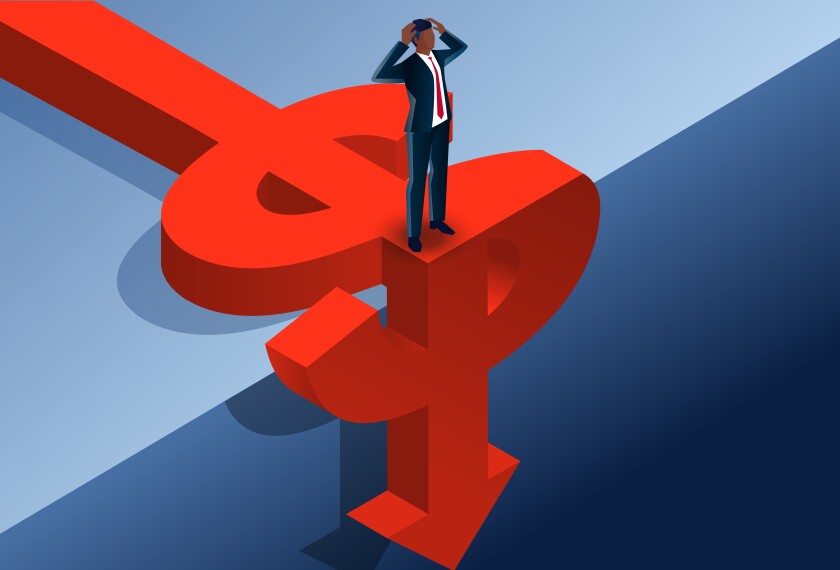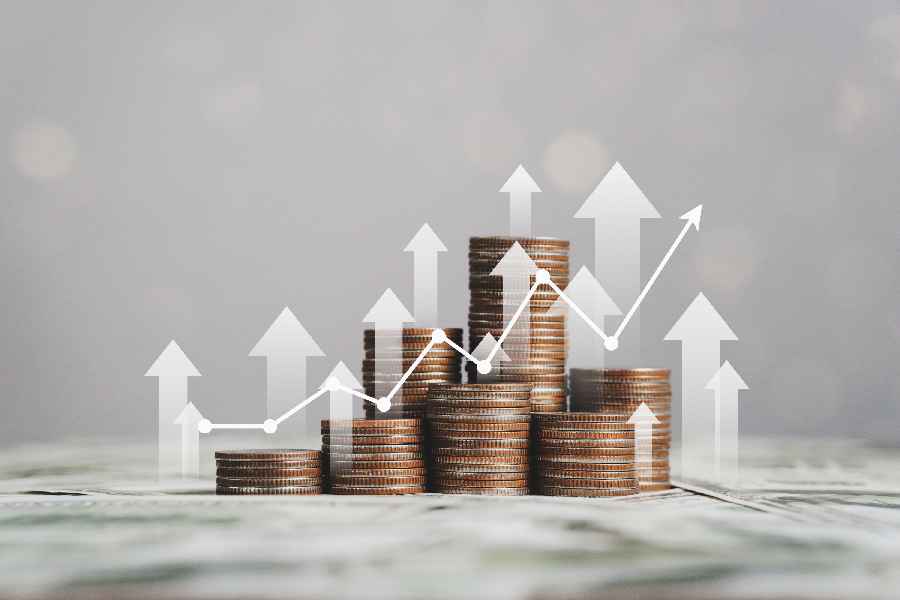trending
neon
Cirque du Soleil offers summer ticket deals
dining out
Celebs ditch the Strip for iconic Henderson restaurant
july 
trending
neon
Cirque du Soleil offers summer ticket deals
dining out
Celebs ditch the Strip for iconic Henderson restaurant
july 

Explore how U.S. fiscal policies and monetary decisions shape investment trends, affecting markets and economic strategies




The role of U.S. fiscal and monetary decisions in shaping investments cannot be understated. U.S. fiscal policy, driven by government spending, taxation, and the overall management of the economy, plays a crucial role in shaping investor behavior and market trends. Monetary policy, determined by the Federal Reserve, sets the tone for economic activity, impacting everything from inflation rates to interest rates. Both these policies have a profound effect on investment choices, economic growth, and market stability.
Fiscal policy refers to the use of government spending and taxation to influence the economy. The U.S. government has the ability to alter fiscal policy through the implementation of budgetary decisions, which can directly impact investors. When the government increases spending, for instance, this can stimulate economic growth by creating jobs, increasing demand, and promoting higher consumer spending. For investors, this could signal potential opportunities in industries that benefit from government contracts, such as infrastructure, defense, or technology.
Conversely, when the government decides to cut spending or raise taxes, it can have a cooling effect on the economy. Higher taxes can reduce consumer spending, while cuts to government programs may lead to higher unemployment rates and slower economic growth. These shifts can make certain investment sectors less attractive. For example, companies relying heavily on government contracts or subsidies may experience declines in stock prices if fiscal austerity measures are implemented.
Moreover, government debt plays a significant role in fiscal policy decisions. When the U.S. government borrows funds to finance budget deficits, it can lead to higher interest rates over time. Investors, particularly those in the bond market, will closely monitor government debt levels. The U.S. Treasury market is often seen as a safe haven, with U.S. Treasury bonds serving as low-risk investment instruments. However, as the national debt increases, there is the potential for inflationary pressures, which could reduce the purchasing power of these bonds over time. Investors may then seek higher yields in other investment vehicles, such as equities or real estate.
Monetary policy is the process by which the Federal Reserve manages the nation’s money supply and interest rates to achieve economic objectives such as low inflation, high employment, and stable economic growth. The Fed’s decisions in this area directly influence investment choices, particularly in the stock and bond markets.
One of the most important tools the Federal Reserve uses is the setting of interest rates. When the Fed raises interest rates, it becomes more expensive for individuals and businesses to borrow money. This can slow down consumer spending and business investment, which in turn may reduce corporate profits. For investors, higher interest rates can lead to lower stock prices as companies face higher borrowing costs, which impact their future growth potential. Additionally, bonds become more attractive when interest rates rise, as new bond issues offer higher yields. This can lead investors to shift their portfolios away from stocks and toward fixed-income securities.
On the flip side, when the Federal Reserve lowers interest rates, borrowing becomes cheaper, which can stimulate both consumer spending and business investment. This often results in higher corporate earnings, which can drive stock prices higher. Investors may move money into equities to take advantage of the anticipated growth, while bonds may become less attractive due to lower yields. Moreover, lower interest rates can spur investment in real estate, as mortgages become more affordable for potential homebuyers and real estate developers.
Inflation is another key factor that monetary policy seeks to control. The Federal Reserve monitors inflation levels closely and adjusts interest rates as needed to keep inflation within target levels. If inflation rises too quickly, the Fed may increase interest rates to cool down the economy and prevent a rise in the cost of living. For investors, rising inflation can erode the real return on investments, especially fixed-income securities like bonds. As a result, investors may look to equities, commodities, or inflation-protected securities (such as Treasury Inflation-Protected Securities, or TIPS) to safeguard against inflation.
The Federal Reserve is arguably the most influential institution in shaping the financial markets. Its monetary policy decisions are closely watched by investors, economists, and market participants, as they provide key signals about the direction of the economy. The Federal Reserve’s decisions are often communicated through statements, press conferences, and minutes from its policy meetings. As a result, any shift in the Fed’s stance on interest rates or its approach to quantitative easing (the process of injecting money into the economy through asset purchases) can have a significant impact on the financial markets.
For example, during times of economic distress, such as the 2008 financial crisis or the COVID-19 pandemic, the Federal Reserve may engage in policies that increase liquidity in the financial system. This could include lowering interest rates to near zero and purchasing vast amounts of assets like government bonds and mortgage-backed securities. These actions are designed to provide businesses and consumers with easier access to credit, thereby stimulating economic activity and supporting asset prices. For investors, these policies can provide opportunities in sectors that benefit from low borrowing costs, such as real estate, technology, and consumer goods.
On the other hand, the Fed may decide to reduce its balance sheet or raise interest rates if it believes that the economy is overheating or that inflation is rising too quickly. This could lead to a correction in the stock market, as investors adjust their expectations for future growth and profitability. Bond markets may also react to changes in interest rates, with long-term yields rising as investors demand higher returns to compensate for the potential loss of purchasing power due to inflation.
Both fiscal and monetary policies have long-term implications for investment strategies. Investors need to stay informed about policy changes and assess how these decisions will affect the broader economic environment. Long-term investors, such as pension funds and endowments, often take a strategic approach to portfolio management, balancing their investments across various asset classes to mitigate risks.
For example, during periods of low interest rates and loose fiscal policy, equities may perform well as companies benefit from cheaper borrowing costs. However, in times of high inflation and rising interest rates, investors may look to diversify their portfolios by increasing their allocation to assets such as commodities, inflation-protected bonds, and international equities that may perform better under different economic conditions.
Moreover, understanding the relationship between fiscal and monetary policy can provide investors with insights into market trends and opportunities. For instance, if the government increases spending on infrastructure projects, investors may seek to capitalize on opportunities in the construction, engineering, and materials sectors. Similarly, if the Federal Reserve signals a shift toward tightening monetary policy, investors may consider reducing their exposure to interest-rate-sensitive sectors, such as utilities and real estate, while increasing their investments in growth sectors that are less affected by interest rate changes
Explore how U.S. fiscal policies and monetary decisions shape investment trends, affecting markets and economic strategies
the latest

U.S. GDP Growth Projections Amid Ongoing Supply Chain Issues
As the U.S. grapples with persistent supply chain issues, GDP growth projections for the coming years are being affected. This article explores the impact of these challenges on the economy and forecasts for 2025.

New Tax Reforms Expected to Stimulate Investment in Small Businesses
New tax reforms in the U.S. are designed to incentivize investment in small businesses, potentially driving economic growth and job creation. This article explores the expected impact of these reforms

Global Economic Concerns: How U.S. Policies Are Shaping the Future
As the U.S. continues to implement key economic policies, global markets are taking note. This article explores how these policies are influencing economic conditions worldwide and what it means for future growth

The U.S. Labor Market: Strong Jobs Report Signals Continued Economic Recovery
The latest U.S. jobs report shows strong gains in employment, signaling continued recovery in the labor market. This article explores the implications of these positive labor market trends for the broader economy

Inflation Remains a Challenge for U.S. Economic Growth in 2025
As the U.S. economy heads into 2025, inflation remains a persistent challenge. This article explores the causes of inflation, its effects on economic growth, and potential solutions for managing rising prices

Stock Market Volatility and Its Impact on Economic Stability
Stock market volatility has far-reaching effects on economic stability. This article explores the causes of stock market fluctuations and their impact on growth, investment, and consumer confidence

Biden's Economic Agenda: Key Policies to Shape Future Growth
President Biden's economic agenda focuses on sustainable growth through infrastructure investment, clean energy initiatives, and tax reforms. This article explores the key policies shaping the future of the U.S. economy

U.S. Reforms: What They Mean for Investors
Recent U.S. reforms are reshaping investment strategies, affecting markets, businesses, and investor confidence. Learn how these changes influence financial decisions

The Link Between U.S. Growth and Investment Strategies
Explore how investment strategies shape U.S. economic growth, influencing markets, businesses, and financial trends for long-term stability